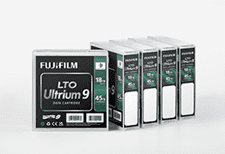 At least for now, climate change is getting worse. We actually had the hottest days on Earth this July with a record global average of 62.92 degrees Fahrenheit. That does not sound that hot but it’s an average including summer in the northern hemisphere and winter in the southern hemisphere. These were the hottest days since 1979 at least, and broke records previously set in 2016 of 62.46 degrees F.
At least for now, climate change is getting worse. We actually had the hottest days on Earth this July with a record global average of 62.92 degrees Fahrenheit. That does not sound that hot but it’s an average including summer in the northern hemisphere and winter in the southern hemisphere. These were the hottest days since 1979 at least, and broke records previously set in 2016 of 62.46 degrees F.
Severe weather could be seen across the U.S. from record-setting triple-digit heat waves out West and down South plus record rainfall and flooding in the Northeast with some locations getting 10 to 12 inches of rain in a single day. Extreme weather can be found in Asia, Europe, really all over the world. Global warming plus an El Nino event where the Pacific Ocean is releasing excessive heat are to be blamed. Scientists are sounding the alarm again that we must curb carbon emissions or we can expect more of the same, only worse, in the years and decades ahead.
The good news is that it appears more and more people including government officials, business leaders and consumers are finally taking climate change more seriously. I can even detect a bit of nervousness these days which is a good thing if we are to have meaningful changes.
Sustainability executives that I’ve been able to meet with recently are totally receptive to anything at all that can help them achieve what looks like daunting tasks to achieve net zero carbon emissions for their organizations. When it comes to data center operations and data storage specifically, they agree with the following points:
1) Data growth is not slowing down – industry experts expect continuous annual data growth rates of anywhere from 25 to 45% through the end of this decade. With AI fueled data analytics, the value of data is only increasing and retention periods are extending from years to decades and in some cases indefinitely.
2) Data centers are energy-intensive – projections for data center growth are dramatic as the world becomes more digitally connected and dependent, with some experts projecting global data center share of electricity consumed as high as 13% by 2030. Meanwhile, data storage is a significant energy consumer with about a 20% share of data center energy consumption and growing.
3) Data quickly goes cold – industry experts agree that 60% to 80% of data goes cold and becomes archival between 30 and 90 days. After 90 days, the probability of accessing that data falls below 1%.
4) Moving cold and inactive data to secondary storage makes sense – today’s modern and highly advanced automated data tape systems are the greenest form of storage available for the foreseeable future. Landmark studies by industry expert Brad Johns show that automated tape libraries consume 87% less energy than equivalent amounts of hard disk drive capacity and over their lifecycle from cradle to grave produce 97% less CO2e and reduce e-waste at end-of life by 85%.
 While the main focus of the sustainability executive is clearly carbon reduction and meeting those big net zero carbon goals, it helps to have something appealing for the financial and IT departments in terms of consensus building. So they also agree, if tape systems can reduce carbon footprint and reduce TCO by as much as 80% and provide the option for air gap as a countermeasure to ransomware, it makes even more sense and will help align internal stakeholders. Some sustainability initiatives cost a lot of money and have long payback periods. So it’s nice to have projects that can reduce both carbon emissions and reduce costs almost immediately.
While the main focus of the sustainability executive is clearly carbon reduction and meeting those big net zero carbon goals, it helps to have something appealing for the financial and IT departments in terms of consensus building. So they also agree, if tape systems can reduce carbon footprint and reduce TCO by as much as 80% and provide the option for air gap as a countermeasure to ransomware, it makes even more sense and will help align internal stakeholders. Some sustainability initiatives cost a lot of money and have long payback periods. So it’s nice to have projects that can reduce both carbon emissions and reduce costs almost immediately.
In the assessment of an organization’s carbon footprint, sustainability professionals are analyzing their Scope 1, Scope 2, and Scope 3 emissions profile and looking for reduction opportunities. These scopes are the scenarios in which carbon emissions are associated directly or indirectly with an organization’s activities. Scopes 1, 2 and 3 were established by the Greenhouse Gas Protocol, a commonly used standard developed by the World Resources Institute and the World Business Council for Sustainable Development. Below is a summary of each:
Scope 1 emissions refer to direct greenhouse gas emissions that come from sources that are owned or controlled by the organization. These emissions result from activities that are under the organization’s operational control. Typical examples of Scope 1 emissions include:
Scope 1 emissions are considered the most controllable by an organization since they are directly linked to its operational activities and facilities.
Scope 2 emissions refer to indirect greenhouse gas emissions that result from the use of purchased electricity by the organization. These emissions occur at the facility where the energy is generated, but they are attributed to the organization using the energy. Scope 2 emissions are categorized as “indirect” because the company does not own or control the sources of energy production but indirectly contributes to emissions through its energy consumption.
Scope 3 emissions cover all other indirect greenhouse gas emissions that occur as a consequence of an organization’s activities but are not classified under Scope 2. These emissions occur in the company’s supply chain, which includes activities associated with suppliers, customers, and other stakeholders. Scope 3 emissions are typically the most challenging to measure and control as they often involve a wide range of activities beyond a company’s direct operational control.
Scope 3 emissions can include:
Including Scope 3 emissions in sustainability assessments is an important part of a comprehensive understanding of an organization’s overall impact on the environment and for identifying opportunities for emissions reductions throughout the supply chain.
When an organization uses cloud services to host its applications, data, and infrastructure, the emissions associated with the energy consumption and operations of the cloud service provider fall under the Scope 3 emissions category for the organization using those services. This means organizations should know how a cloud service provider is storing their data. Is it on energy intensive disk? Or if it is cold data that has been infrequently accessed, has it migrated to a more eco-friendly tier such as automated tape libraries?
Well known cloud service providers such as Amazon and Microsoft offer cold, deep archive via their Glacier and Azure service offerings that leverage the low cost and low energy consumption advantage of today’s modern tape. Organizations can specify these eco-friendly cloud tiers and in some cases data can auto-tier to these more economical tiers based on data usage and access history.
How about other cloud service providers? Can they produce the best possible Scope 3 report card? If they don’t offer an eco-friendly tape tier, what are they waiting for? Organizations will increasingly choose to work with cloud service providers that prioritize sustainability in their service offerings.
